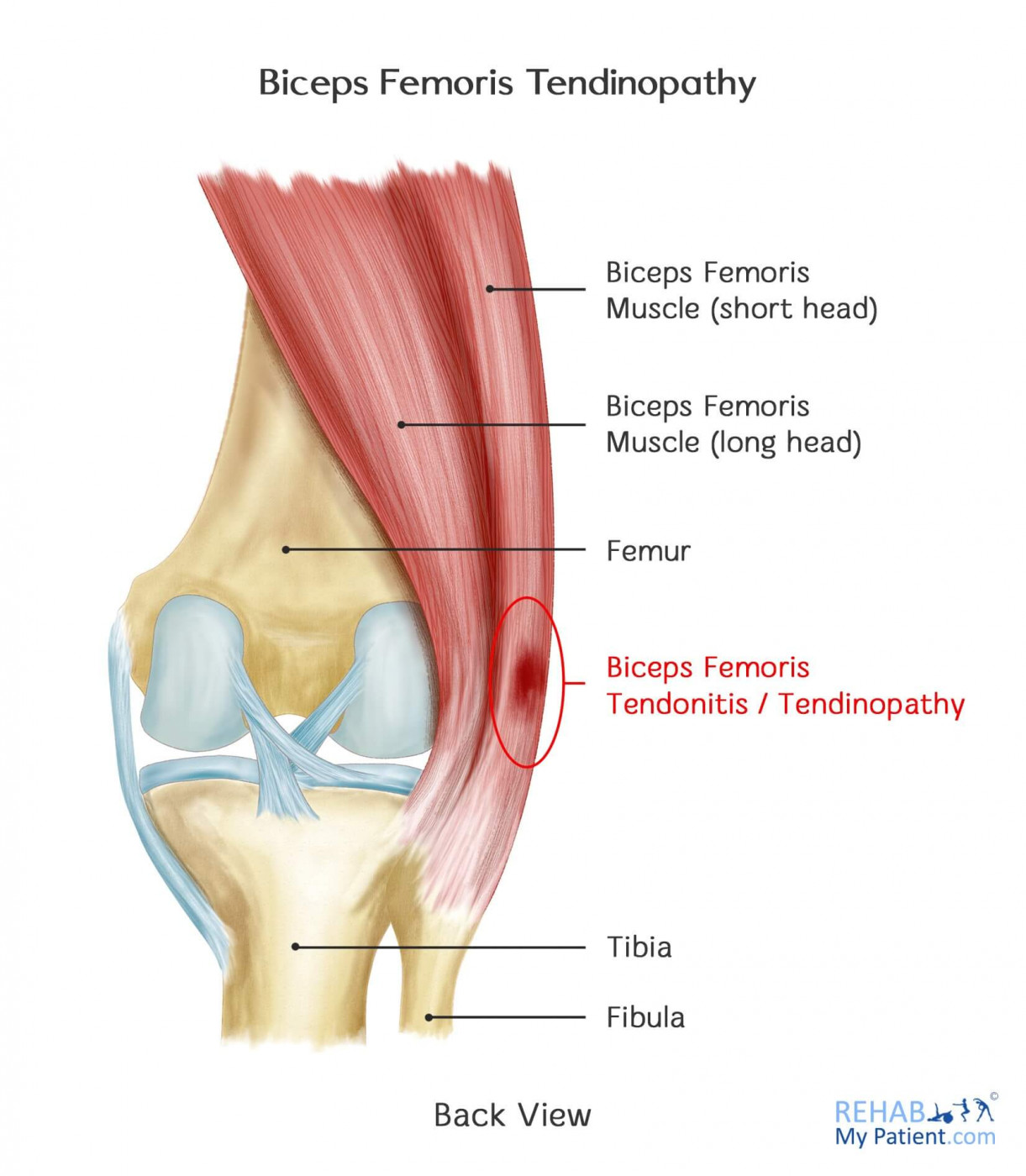
Biceps femoris tendinopathy is an overuse injury to the biceps femoris tendon (main hamstring muscle) along the back of the thigh. As the biceps femoris has two heads, and one insertional point, pain can occur at one of two places: just under the buttock, or the back and outside of the knee joint. These locations are where the muscle is connected to your pelvis (just under your buttock crease) and your shin bone (fibula). Repeated injuries that involve the muscle can cause a chronic inflammation of the tendons and their sheath. Tendinopathy is often associated with inflammation of the tendon and repeated micro tearing of the surrounding sheath.
Biceps Femoris Tendinopathy Anatomy
There are two heads of origin in the joint. One, which is the long head, arises out of the inner and lower impressions along the back part of the leg. The other, the short head, arises out of the lateral lip of the leg and extends up to the buttocks. Fibers of the long head form the fusion belly, which passes downward and laterally across the sciatic nerve ending in aponeurosis and covering the posterior of the muscle. Fibers received from the short head become contracted with the tendon, which is inserted with the lateral side of the fibula head (the top of the fibula bone) and a small slip of the tibia (shin bone).

How to Treat Biceps Femoris Tendinopathy:
- Identify which activity is causing the problem, and stop the activity. Remember that this is an overuse injury, so it’s likely to be the activity you do the most regularly.
- Use ice to the area where the pain is located. Apply for 5-10 minutes 3-5 times per day. The ice will help to reduce inflammation and allow the joint the time it needs to rest and recover after an injury.
- Avoid hamstring stretches. Stretching can separate the muscle fibres, and cause more inflammation. Avoid stretching for at least two weeks or until advised by your physical therapist.
- Get physical therapy twice per week (or every day if you are an elite athlete). Massage, ultrasound, LASER and acupuncture can all help stimulate blood flow and encourage healing.
- Don’t sit for extended periods of time. The pressure of sitting can irritate the pain under your buttock, especially on a hard chair. Get up and move regularly.
Tips:
- It is quite normal to feel a squeaking or clunking in your knee when you bend it, or squat.
- Three days after you no longer have pain, begin a simple exercise and stretching program.
- If you want to go back to sport, ask your therapist for some dynamic and functional strengthening exercises.
- Tenderness and pain under the buttocks and along the outside of the knee all signal biceps femoris tendinopathy.
- When you experience pain under your buttock while running or sprinting you need to be checked for biceps femoris tendinopathy.
Sign Up
Sign up for your free trial now!
Get started with Rehab My Patient today and revolutionize your exercise prescription process for effective rehabilitation.
Start Your 14-Day Free Trial